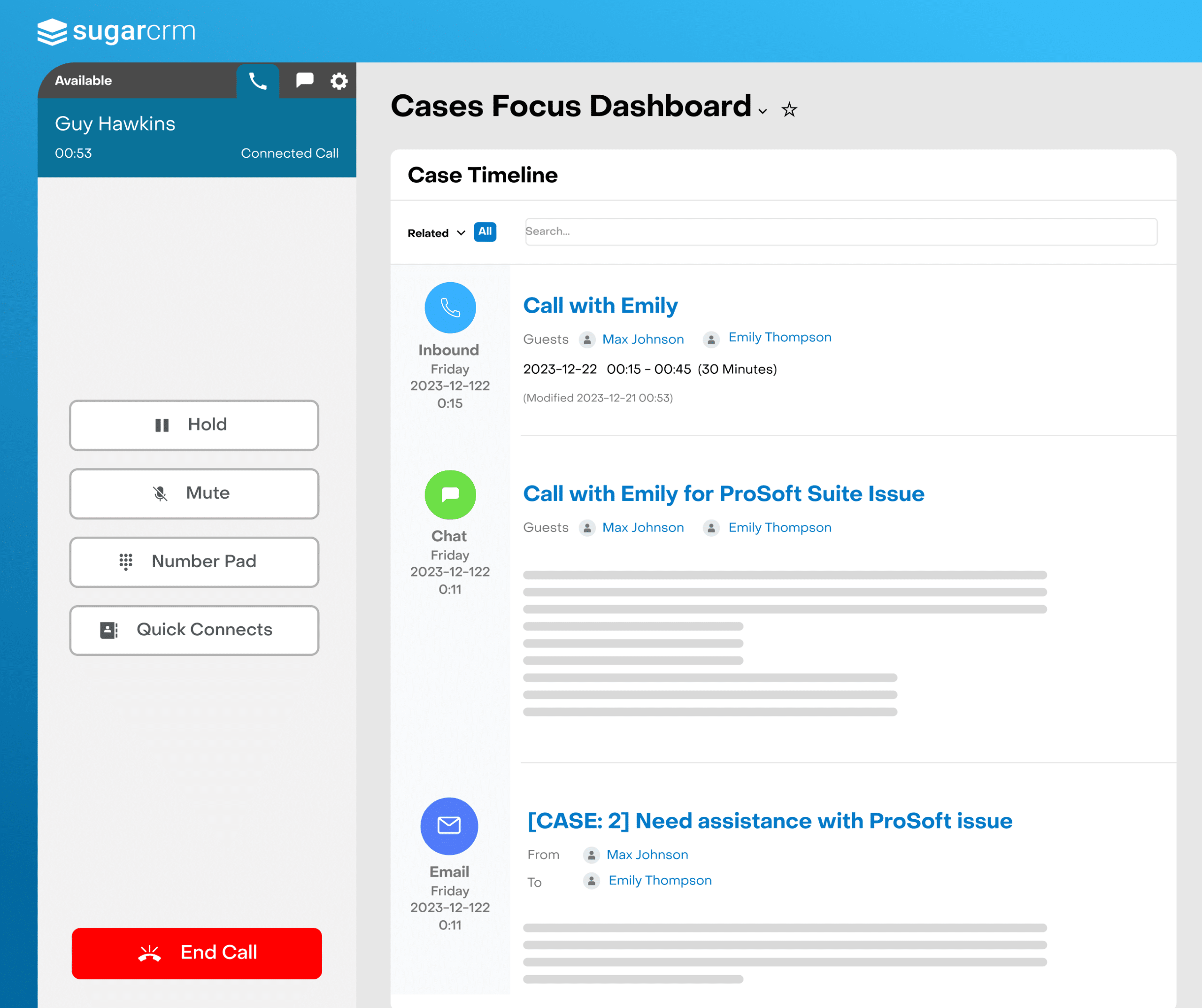This Is Why You Need Customer Service Data
If you read our recent recommendations on proven customer service strategies, you know how important it is to apply similar tactics across your entire organization:
- How Customer Service Builds Your Brand
- You Should Be Doing Customer Service Like These 2 Companies
- Lessons From 2 More Top Customer Service Companies
While many of the methods described in these posts are rooted in the theories of thought leaders, there’s data to back them up, too.
Today, we’re taking a look at the latest stats and studies to better understand how customer service impacts the customer experience.
Why Measure Customer Service Data?
For years, customer service has been structured as an individual department—one that operates in a silo largely separated from the rest of your organization.
With so much of a company’s success now hinging on the customer experience, this method has become outdated.
Customers now expect to receive support across the entire organization, whether they’re using chatbots to ask questions or communicating on social media to vent frustrations. The more you can embed customer service into every aspect of your business, the better equipped your employees will be to meet customer needs as they arise. In fact, once you can get really good at this, it’s possible to exceed a customer’s expectations before they even realize they have them.
To understand what I mean, let’s take a look at several recent statistics that help drive this point home.
The Cost of Poor Customer Service
The customer service war is no joke: Companies are losing all kinds of profit potential simply by falling behind in this one area:
- 71% of customers will end a relationship after one negative customer service experience, and 61% will take their business to a competitor
- US businesses have been known to lose as much as $1.6 trillion in one year, simply from customers switching to competitors because of poor service
- If just one negative experience goes unresolved, it will take 12 positive experiences to make up for it
- Depending on the industry, it’s anywhere from five to 25 times more expensive to acquire new customers than it is to keep current ones by adjusting your customer service approach
The Profitability of Exceptional Experiences
Countless studies have shown that focusing first and foremost on the customer experience can lead to incredible results. Here are a few of our favorite findings:
- 80% of customers are willing to pay more for better service, and many will even increase their spending by more than half
- Increase customer retention rates by just 5%, and your profits could soar more than 25%
- Even a moderate improvement to the customer experience has been shown to generate $823 million more for a company with $1 billion in annual revenues
Which Customer Service Strategies Work Best?
By now, you may be wondering:
What, specifically, are companies doing to improve the customer experience and increase profit margins?
To answer this question, we turned to recent research on some of the most commonly used customer service methods:
- Social Media: In one recent survey, the number of customers who reported reaching out to brands on social media more than doubled within five years. In another, customers were far more likely to prefer a brand when the company engaged with them on social media.
- Self-Service Portals: Today’s customers rely on a wide variety of self-service channels. An estimated 60% consult with website FAQs, while another 38% turn to online communities and 35% use mobile self-service apps.
- Live Support Agents: For seven in 10 customers, interacting with a pleasant representative is key to positive customer service experiences.
And yet…
- Nearly half (40%) of customers want service reps to take care of their needs faster, and a third are most frustrated by having to repeat information to multiple customer service agents.
How can you know where your company stands in each of these areas? It’s time to start measuring and monitoring customer service data. But don’t worry—this process isn’t nearly as overwhelming as it might sound.
Two Customer Service Metrics You Should Be Measuring
You can make a noticeable difference in your customers’ experiences, simply by identifying common issues and studying top performing agents.
Best way to do that? Measure. However, you’ll want to go beyond the basics of traditional metrics such as mean time to resolution and first response resolution. While these benchmarks are important, they won’t give you the full picture. Two additional metrics will help you predict customer loyalty and future profitability.
Net Promoter Score (NPS)
The Net Promoter Score looks at one mission-critical factor: the percentage of customers who have become brand advocates. It’s obtained by asking just one simple question:
How likely is it that you would recommend this company to a friend or colleague?
The resulting score tells you who’s at risk for defecting to other products, and how many customers will renew and remain loyal. Sixteen years after the concept of NPS burst onto the scene, it remains as relevant as ever. If you’re not already regularly using NPS to understand the health of your current customer service strategies, now’s the time to start.
Customer Effort Score (CES)
Here’s another fascinating stat: 70% of formerly dissatisfied customers whose problems are resolved by Customer Service are willing to shop with the brand again.
This is where the customer effort score, or CES for short, comes in.
This metric measures how much effort a customer has to put in to get an issue resolved, a request fulfilled or a question answered. In one study of 75,000 customer service interactions, researchers found CES to be a bigger predictor of loyalty than other approaches focused primarily on “surprising and delighting” customers. An astounding nine in 10 customers with high CES scores were found to become disloyal, compared to just one in 10 among those with low CES scores.
Measuring this metric will give you the insight you need to improve service and keep customer churn rates low.
Looking for more inspiration and ideas? In an era when consumers are bombarded by choices, customer service is your secret weapon in the battle for lasting loyalty. Once you get comfortable measuring service metrics within your organization, you’ll find all kinds of opportunities to improve the customer experience. And if you’d like to get some ideas right now, be sure to check out these customer experience posts on the Sugar blog.

